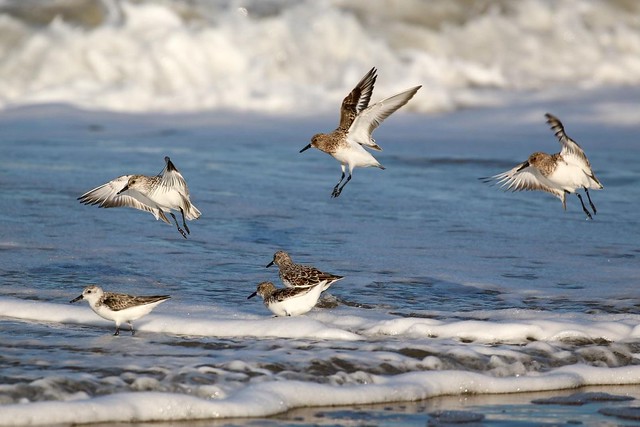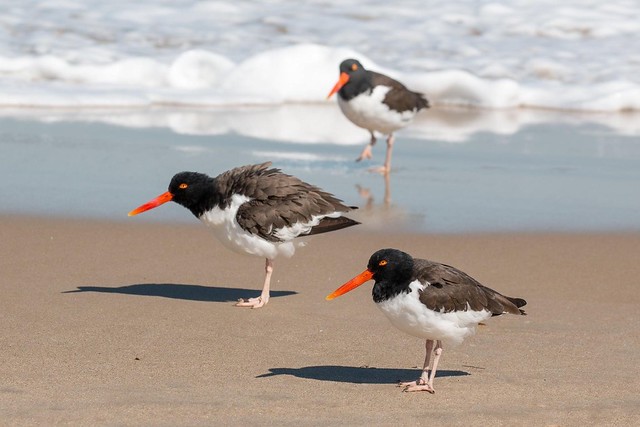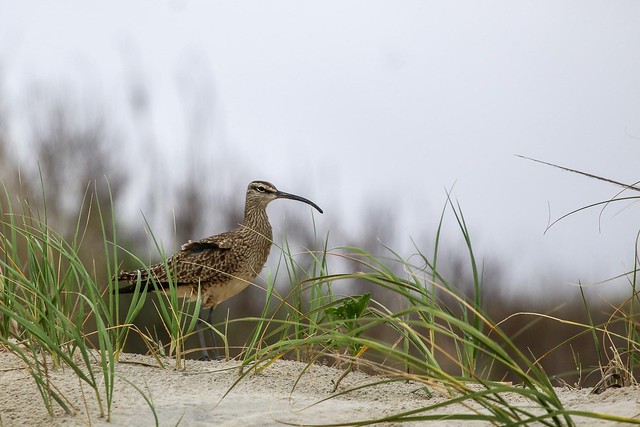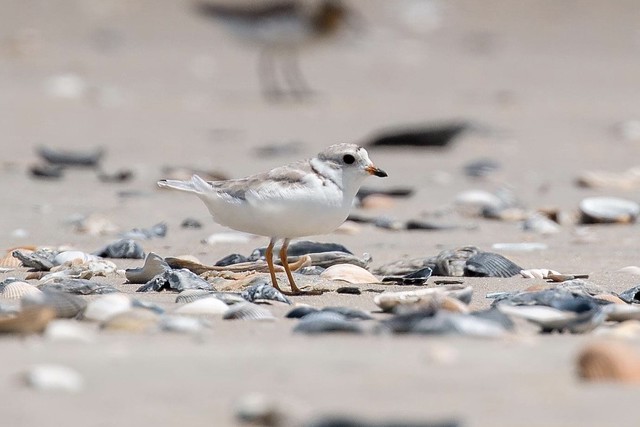Read Our Blogs
The Shorebirds have arrived at False Cape State Park!
As hot summer weather continues at False Cape State Park, you might notice a new kind of crowd moving onto the beach - shorebirds!

Sanderlings flying above the waves at False Cape State Park.
Shorebirds are a diverse group of birds from the order Charadriiformes, including plovers, sandpipers, oystercatchers, willets, and many others. Shorebirds are some of the first birds to migrate and typically head south in late June or July from their breeding grounds (often in the high Arctic) to the warmer places where they spend the winter. Despite this early start, shorebird migration in Virginia can last through November as juvenile birds often undertake their trip several weeks after the adults have already headed south.

A trio of American oystercatchers resting on the beach.
At least 15 species of shorebirds have been spotted at False Cape State Park in July and early August, including some distinctive species like whimbrels and piping plovers.
Whimbrels are one of our larger shorebird species, but their most distinguishing feature is a long, curved bill. On the False Cape beach, this bill is working to find aquatic invertebrates hiding out in the water and sand. However, on their breeding grounds in the Canadian tundra, whimbrels eat berries, spiders, and insects.

A whimbrel standing among the beach grasses.
It’s always a thrill to see piping plovers at False Cape as the Atlantic Coast population of this species is threatened. These small, round shorebirds sport a light gray back with a black forehead stripe and neck ring. They are experts at blending into the soft sand above the tide line.

A piping plover blending in with the sand and scattered shells on the beach.
Because of piping plover population declines, scientists are studying these birds and following their migration through bird-banding programs. These bands identify individual birds and are a low-tech way to track the birds as they migrate. This tracking is crucially important to understanding and protecting the species.
False Cape State Park was recently visited by piping plover “XMJ,” banded in 2015 by a research crew from the University of Rhode Island at Napatree Spit, Rhode Island, and is now at least 7 years old. If you see a shorebird (or any other bird) with a colorful leg band, you can be a part of the science by reporting it to the National Bird Banding Laboratory at www.reportband.gov or click here.

A piping plover sporting a green leg band with the letters XMJ.
Next time you find yourself on the beach at False Cape State Park, keep an eye out for some of the fascinating shorebird species that fly their way through Virginia every year on their remarkable migration journey!
False Cape State Park is located on the south side of Back Bay National Wildlife Refuge, near Sandbridge, Virginia.
The park is accessible only by foot, bicycle, beach transport, tram or boat. You must travel through the Refuge to get to False Cape. Please observe all Refuge rules as well as Virginia State Park rules. For more information on parking and access to False Cape State Park, please click here or call the park office at 757-426-7128.
It's very important to note that the Refuge does not allow pets.
If you have read the article and have a question, please email nancy.heltman@dcr.virginia.gov.
Search for blogs
By Park
Categories
Cabins
Camping
Fishing
History and Culture
Other
Programs and Events
Trails
Volunteers
Water Fun
Archive
2025
2024
2023
2022
2021
2020
2019
2018
2017
2016
2015
2014
2012













